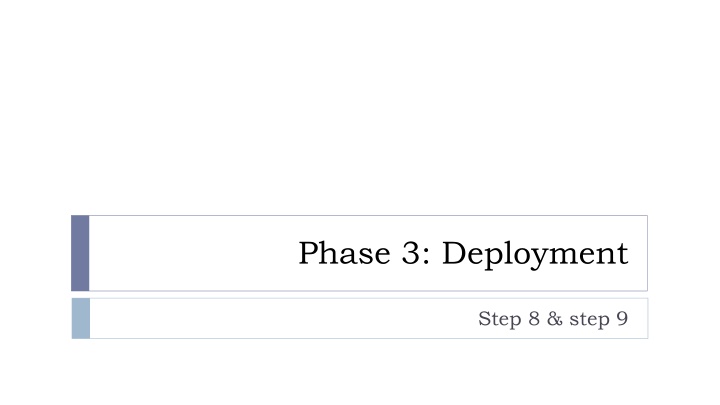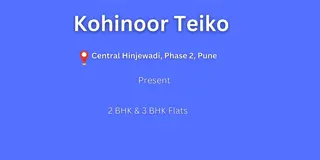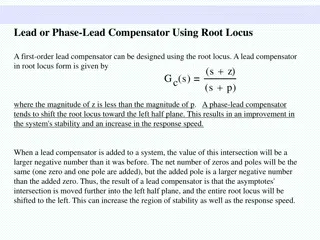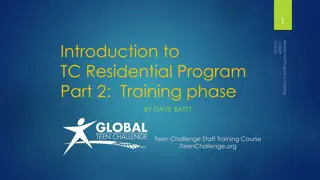
Innovative Deployment Methodologies for Effective Project Implementation
Explore various deployment methodologies such as Results-Driven Incremental (RDI), Information Packaging Methodology (IPM), and the Big-Bang Approach. Understand the benefits of each stage in the RDI process and how these strategies can enhance project success through iterative and incremental development cycles.
Download Presentation

Please find below an Image/Link to download the presentation.
The content on the website is provided AS IS for your information and personal use only. It may not be sold, licensed, or shared on other websites without obtaining consent from the author. If you encounter any issues during the download, it is possible that the publisher has removed the file from their server.
You are allowed to download the files provided on this website for personal or commercial use, subject to the condition that they are used lawfully. All files are the property of their respective owners.
The content on the website is provided AS IS for your information and personal use only. It may not be sold, licensed, or shared on other websites without obtaining consent from the author.
E N D
Presentation Transcript
Phase 3: Deployment Step 8 & step 9
Deploy, Using The Result-driven Incremental methodology Prototyping and Deployment Prototyping Pilot Deployments
Pre-RDI Deployment Methods The incremental approach to systems development and deployment The waterfall model, the parent of the incremental model for systems development, was the mainstay of the systems development methodologies for years but has recently fallen out of favor.
The Information Packaging Methodology The learning loop or spiral model approach to system deployment is often called the information packaging methodology (IPM)
An alternative way A spiral representation of the information packaging methodology.
The Big-Bang Approach to Deployment The traditional development model relies on the idea of the big-bang deliverable. the deployment team's targets or milestones A, B, and C pass but no benefits are realized by the company until the end of target deadline C. the system goes "live" and the entire set of benefits is realized simultaneously
The Results Driven Incremental Methodology Implementation of complex pieces of technology such as a knowledge management system need a new approach that can overcome the limitations posed by all deployment strategies The RDI methodology specifies that the project be broken up into a series of short, fast-paced development cycles coupled with intensive implementation cycles, each of which delivers a measurable business benefit
The RDI Benefits of each RDI stage are realized immediately after completion of each release.
Steps Involved in the RDI Methodology Objective-driven decision support Incremental but independent results Software and organizational measures clearly laid out at each stage Intensive implementation schedules: Results-driven follow-ups
Objective-driven decision support se targeted business results and end objectives to drive decision making at each point throughout the deployment process For example, each phase of knowledge management system implementation has its desired results (the whys) and projected outcomes (the so whats) clearly answered before it is initiated.
Incremental but independent results "Divide the implementation into a series of nonoverlapping increments, each of which enables measurable business benefits and improvements, even if no further increments are implemented."
Software and organizational measures clearly laid out at each stage Each increment must implement everything required to produce the desired subset of results. software functionality must be accompanied by the necessary changes in policies, processes, and measures that are needed to make it work For example, if one step includes the deployment of a discussions database, it must be accompanied by changes that motivate employees to use it, look for information on it, and contribute to it
Intensive implementation schedules Each increment must be planned in a way that it can be implemented within a short time frame. Depending on the overall complexity of the knowledge management project, the time for completion of each incremental feature should range from two weeks to three months
Results-driven follow-ups Results of each increment must be the basis for adjusting and fine-tuning potential flaws in subsequent increments
Business Releases Incremental segments of an implementation using the RDI methodology are called its business releases.
A Sample Business Release for a Consulting Company Based on the RDI Methodology
Step 8, the deployment stage, is the point where the knowledge management rubber actually meets the road. Select and test-fire the knowledge management system using a pilot deployment. Select a pilot project that is representative, and that will help identify and isolate failure points in the final deployment stages. Select a project that has high visibility and has tangible outcomes. Prevent independent or specialized knowledge "silos"from arising.
Use prototypes to involve end users. Iteratively improving a system with incremental prototypes lets the system's potential users see, touch, and feel a system even before a system is completed. Many flawed assumptions in the system's design can be corrected inexpensively at this stage.
Focus on results-driven incrementalism of the RDI methodology. Use the RDI methodology to deploy the system. Convert factors to processes. Eliminate information packaging methodology, SDLC orientation, and traditional big-bang methodological variants. The RDI methodology lets your team capitalize on insights provided by preceding increments. The methodology works best if the technology component of knowledge management itself is divisible
Create effective business releases. Create cumulative results-driven business releases. Select and initialize releases with the highest payoffs first. Well-crafted business releases will help you identify and avoid the traps inherent in the RDI methodology.
Budget for nontechnology costs in RDI business releases. Besides training costs and work processes integration, budget for costs related to deployment and implementation of your knowledge management system.
Develop a clear communication process with users. Develop a clear communication process that explains the expectations and reasoning behind the introduction and integration of the knowledge management system with business processes.
Strive for iterative perfection. A healthy knowledge management system needs iterative improvements as the business environment and accompanying processes evolve over time. The deployment process should not come to a halt once step 10 of the knowledge management "methodology" is completed.
How does a typical CKO compare to an average manager?
From the CIO to the CKO CIOs have distinct responsibilities: IT strategy, development of systems, connectivity, IT support, and general IT management. The CIO need not always be entrepreneurially oriented to be successful, but the same is not true for the CKO. The CIO can rarely be both the CIO and the CKO; the characteristics underlying the CKO's role are different.
CKOs come in many guises and with many titles: Director of intellectual capital (e.g., Skandia) Director of knowledge management Director of organizational learning Director of best practices management Knowledge or competence evangelist Director of sales enablement (e.g., Platinum) In some cases, best practices manager, CEO, or strategic knowledge manager
Knowledge Management Leadership Roles Championing Educating users Educating the management team Measuring the impact of knowledge management Mapping existing knowledge Defragmenting scattered knowledge Creating the technology channels Integrating business processes with the technology enablers
The CKO's Job Description Optimizing process design for knowledge management: Design processes for creating new knowledge, distribute existing knowledge, and apply or reuse what is already known. Creating channels: Create channels for leveraging untapped knowledge and competencies within the firm. This also implies leveraging the latent value of hidden knowledge for the good of business development a commonly observed deficiency in CKOs researched. Integrating knowledge management: Embody knowledge management in the routine tasks and activities of the firm's employees. Breaking barriers and eliminating impediments: Break down technical, cultural, and workflow barriers in communication and knowledge exchange processes. The CKO must also break internal funding barriers by making a strong case for KM investments. Watching the learning loop: Ensure that the firm is learning from its past mistakes and failures. While this problem might seem to be ridiculous on first thought, companies in the United States alone spend close to $10 billion on repeating mistakes and solving problems that do not need to be solved again. Creating financial and competitive value: Create value out of both the knowledge assets and the knowledge management system. Value need not be solely financial. Supporting IT and eliminating knowledge flow gaps: Support the above tasks with IT; bridge knowledge flow gaps.
Four categories of initiatives for which the CKO or equivalent is often responsible.
the technological initiatives that a CKO is responsible Building directories: Create enterprise wide skills and knowledge directories. Creating channels: Create channels for exchange of documents and other codified forms of explicated knowledge. Extending the intranet: Develop the intranet and include rich multimedia support within it. Supporting group work: Support group and collaborative work through collaborative technology tools and new policies that promote such work. Providing tools for collaborative problem solving: Develop and implement tools for collaborative problem solving. Supporting remote work: Provide support for distributed work, remote access, telepresence, and telecommuting. Building repositories: Build repositories to store "lessons learned." These can begin with simple Notes databases and later be expanded to relational databases tightly integrated with the intranet front end. Infusing external knowledge: Enable infusion of external task-specific, domain specific, and competitive knowledge to provide a more stable competitive stand for the firm. Enabling tacit knowledge transfer: Improve knowledge sharing using tools such as video conferencing, whiteboards, mind maps, etc. Introducing cross-functional tools: Introduce tools for capturing and exposing assumptions of
The Successful CKO A. Good understanding of the technology B. Credible discussions with technology partners C. needs the skills of an effective manager and an entrepreneur D. needs to understand the workings of the company inside out to be able to comprehend its vital processes E. must be successful as a merchant of foresight D E B A C CKO
Reward Structures to Ensure Knowledge Management Success Each employee must know why her opinion and contribution to the knowledge management system, as a whole, counts. Trust and cooperation are critical factors in the smooth integration of a knowledge management system into the firm's employee base and as a cultural whole. If a knowledge-related role is assigned and results expected, the CKO must ensure that employees are given the time to contribute to it as a part of their job It's the CKO's responsibility to motivate employees to use and add value to the knowledge management system and, in turn, the firm






















